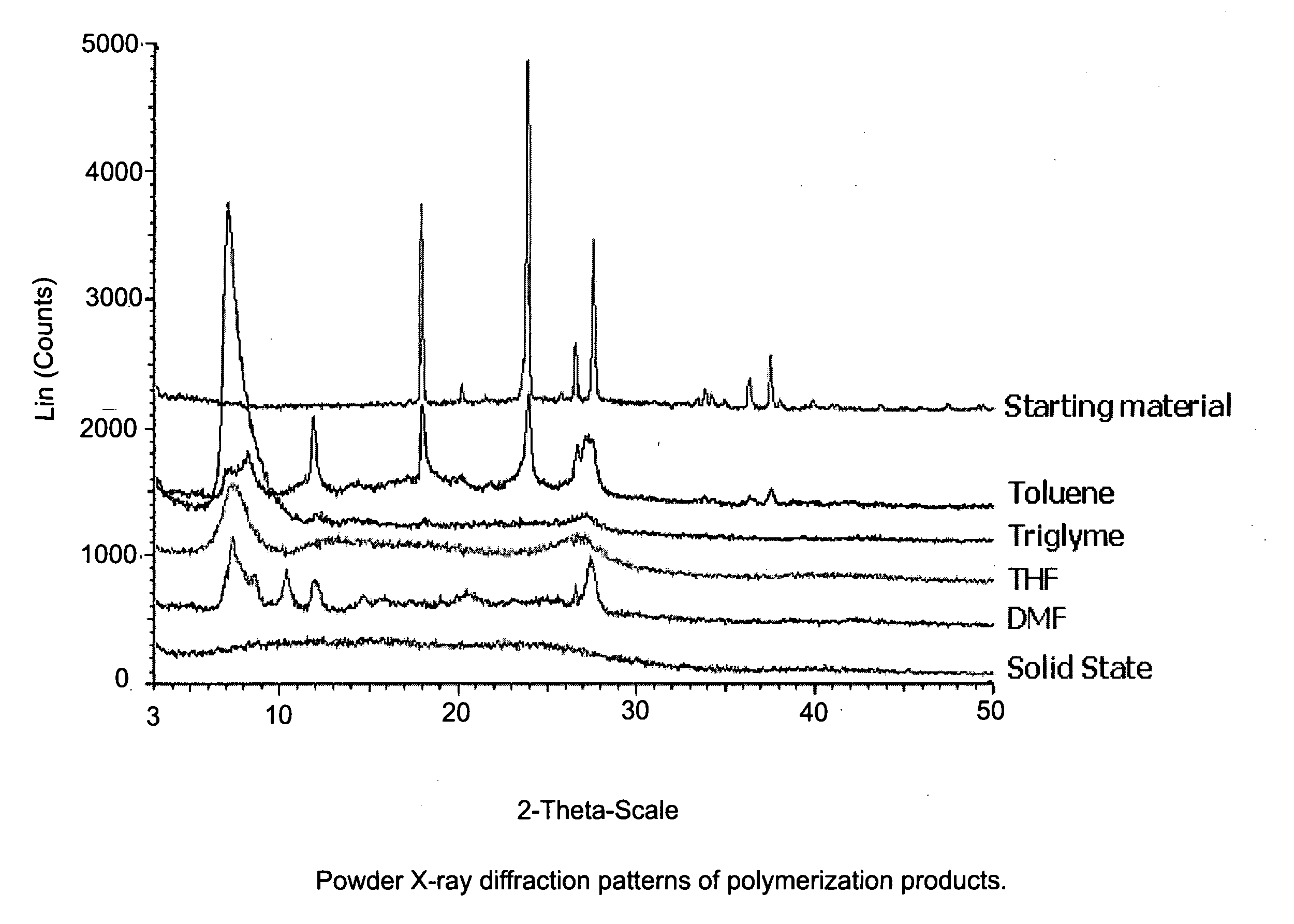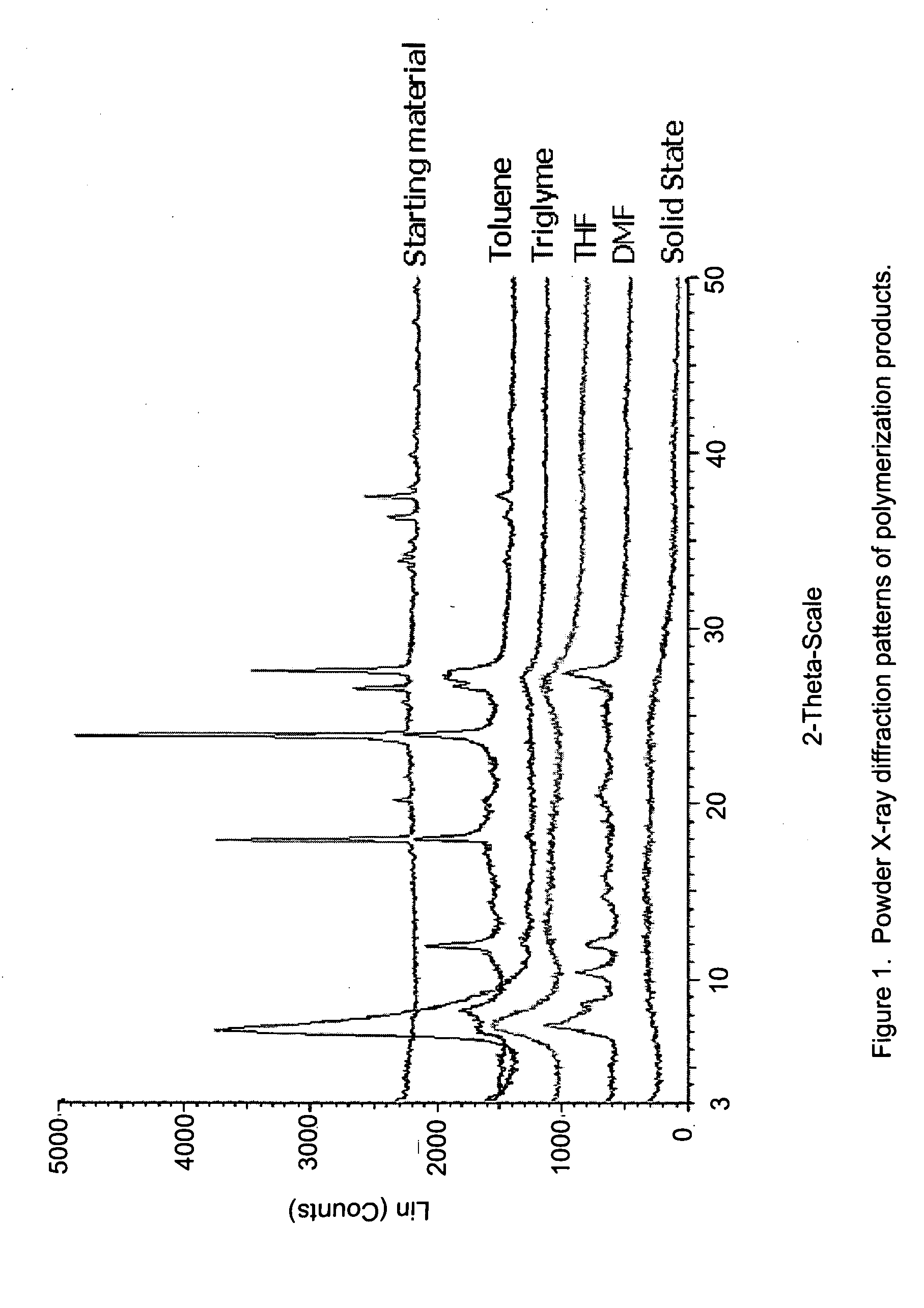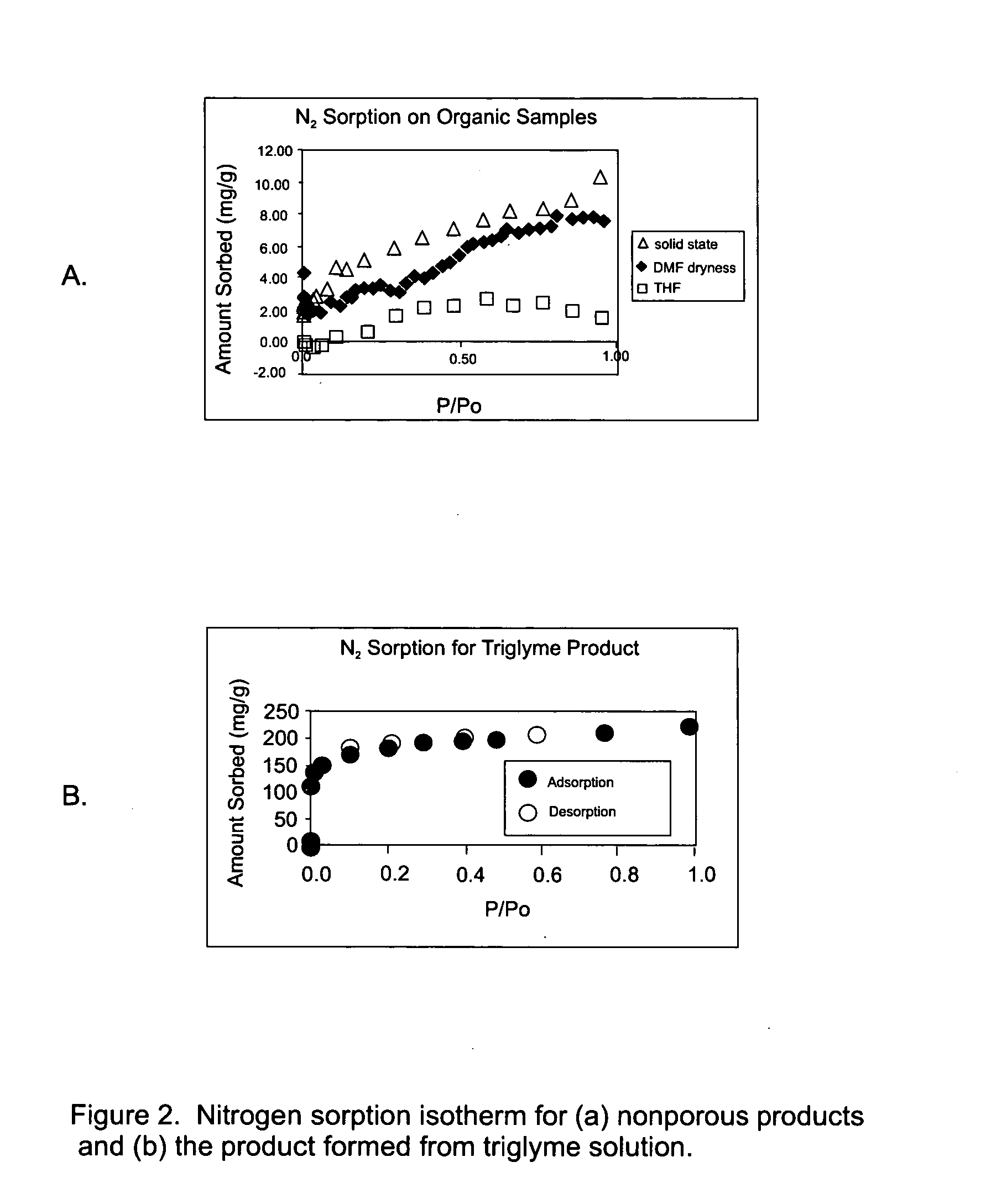Covalently linked organic frameworks and polyhedra
a covalently linked organic framework and polyhedron technology, applied in the direction of organic compound/hydride/coordination complex catalyst, organic compound/compound/hydride/coordination complex catalyst, group 3/13 element organic compound, etc., can solve the problem of limiting the flexibility needed in the formation of extended or functionalized structures, irregular pore structure, and inability to produce extended materials
- Summary
- Abstract
- Description
- Claims
- Application Information
AI Technical Summary
Benefits of technology
Problems solved by technology
Method used
Image
Examples
example 1
Condensation of 1,4-phenylene bisboronic acid homo-polymerization
[0059] a) Solid-state synthesis. When compound XVII is heated to 238° C. under vacuum (92 mtorr) for one day, the resulting white powder is amorphous by PXRD, and nonporous by low-pressure gravimetric nitrogen sorption (T=77 K). This lack of crystallinity and pore accessibility may indicate the need of a space-filling substance (e.g. solvent) during the synthesis around which the desired product may form.
[0060] b) Solvent-based syntheses. A saturated solution of compound XVII in DMF is heated to dryness, the as-synthesized material is nonporous by low-pressure gravimetric nitrogen sorption (T=77 K). The lack of porosity may be due to DMF molecules tightly bound to the framework within the pores. Although, activation methods such as washing with volatile solvent or evacuation under mild heating may lead to porous materials, X-ray diffraction shows such materials in general to be crystalline.
[0061] After heating a sol...
example 2
[0062] Alternative synthesis of COF-1. A Pyrex tube measuring o.d.×i.d.=10×8 mm2 is charged with 1,4-benzene diboronic acid (BDBA) (25 mg, 0.15 mmol, Aldrich) and 1 mL of a 1:1 v:v solution of mesitylene:dioxane. The tube is flash frozen at 77 K (LN2 bath), evacuated to an internal pressure of 150 mtorr and flame sealed. Upon sealing the length of the tube is reduced to 18 cm. The reaction mixture is heated at 120 2C for 72 h yielding a white solid at the bottom of the tube which is isolated by filtration and washed with acetone (30 mL). Yield: 17 mg, 71% for (C3H2BO)6.(C9H12)1. Anal. Calcd. For (C3H2BO)6.(C9H12)1: C, 63.79; H, 4.77. Found: C, 56.76; H, 4.34. Following guest S2 removal: Anal. Calcd. for C3H2BO: C, 55.56; H, 3.10. Found: C, 51.26; H, 2.91. Note: organoboron compounds typically give lowered carbon values in elemental microanalysis due to the formation of non-combustible boron carbide by-products.
example 3
[0063] Synthesis of COF-5. A Pyrex tube measuring o.d.×i.d.=10×8 mm2 is charged with 1,4-benzene diboronic acid (BDBA) (25 mg, 0.15 mmol, Aldrich), 2,3,6,7,10,11-hexahydroxytriphenylene [(HHTP) 16 mg, 0.050 mmol, TCI] and 1 mL of a 1:1 v:v solution of mesitylene:dioxane. The tube is flash frozen at 77 K (LN2 bath) and evacuated to an internal pressure of 150 mtorr and flame sealed. Upon sealing the length of the tube is reduced to 18 cm. The reaction mixture is heated at 100° C. for 72 h to yield a free flowing gray-purple powder. Note that the purple color arises from oxidation of a small fraction HHTP which exhibits a very large extinction coefficient and is therefore very highly colored. This side product becomes incorporated within the pores imparting the purple color to the ‘as synthesized’ form of COF-5. Following guest removal (see adsorption results below) COF-5 is obtained as a light gray solid. Yield: 15 mg, 73% for C9H4BO2 following guest removal. Anal. Calcld. for C9H4BO...
PUM
| Property | Measurement | Unit |
|---|---|---|
| angle | aaaaa | aaaaa |
| angle | aaaaa | aaaaa |
| length | aaaaa | aaaaa |
Abstract
Description
Claims
Application Information
 Login to View More
Login to View More - R&D
- Intellectual Property
- Life Sciences
- Materials
- Tech Scout
- Unparalleled Data Quality
- Higher Quality Content
- 60% Fewer Hallucinations
Browse by: Latest US Patents, China's latest patents, Technical Efficacy Thesaurus, Application Domain, Technology Topic, Popular Technical Reports.
© 2025 PatSnap. All rights reserved.Legal|Privacy policy|Modern Slavery Act Transparency Statement|Sitemap|About US| Contact US: help@patsnap.com



